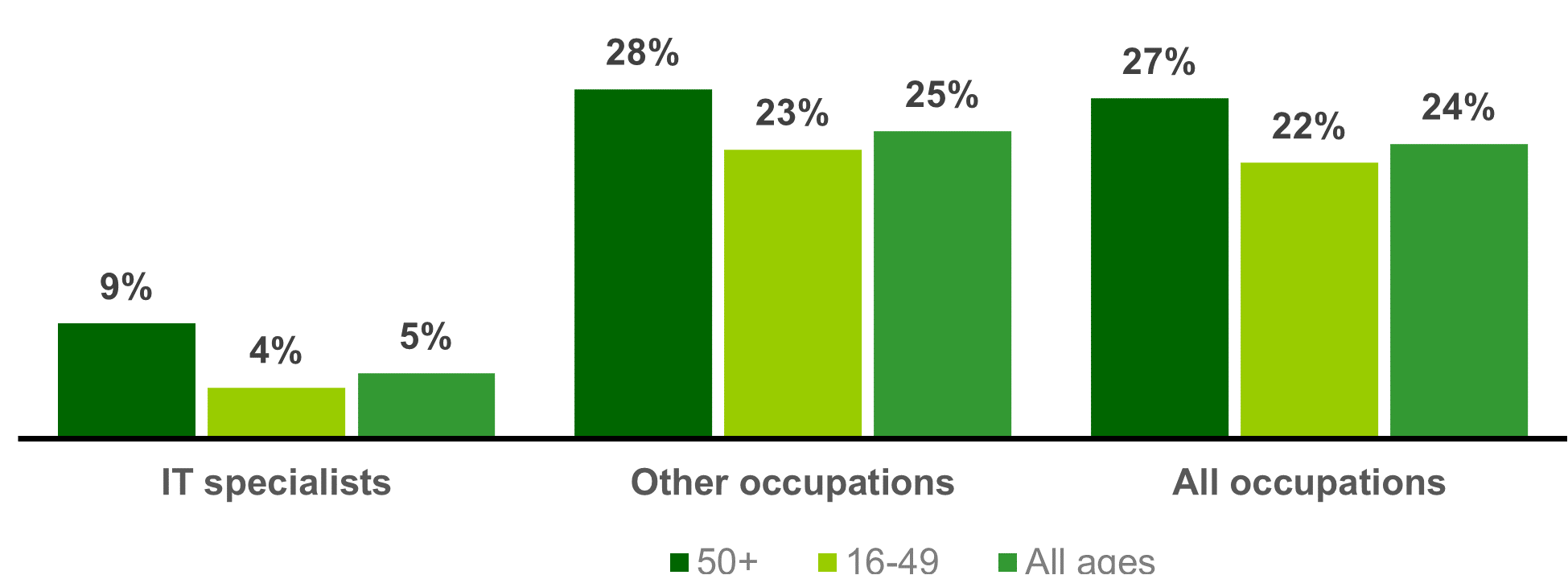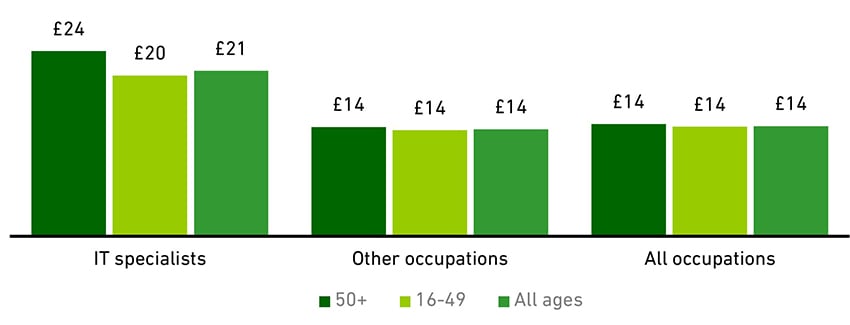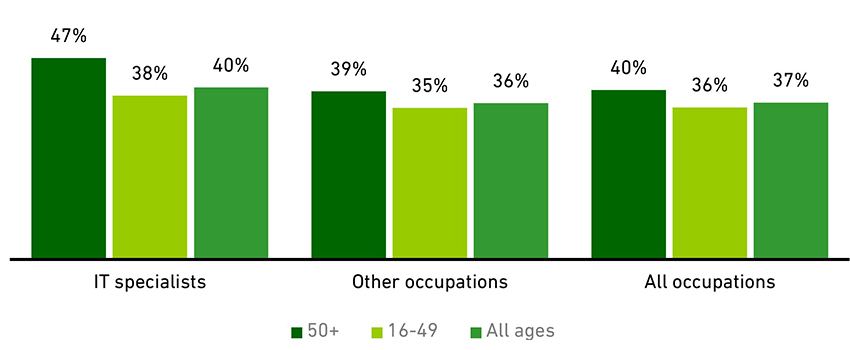Working hours and benefits
Full-time and part-time working
IT specialists in the UK are much less likely to work part-time than other workers and in 2020, just 5% were working part-time hours compared with 24% of workers as a whole. Older IT specialists were, however, much more likely to be working part-time - 9% of those aged 50 and above stating this to be the case.
As with other IT specialists / workers more generally, when asked why they were working part-time, the majority of older IT specialists working part-time stated that they were working reduced hours as they did not want a full-time job (90% stating this to be the case on average over the 2016-20 period).
Incidence of part-time working (2020)

Source: Analysis of ONS Quarterly Labour Force Survey by BCS
Remuneration
In 2020, the median hourly earnings recorded for older IT specialists working as employees and on a full-time basis was £24 per hour - an amount 15% higher than that recorded for IT specialists as a whole (£21 per hour) and 65% greater than that for all older employees in the UK at that time (for which a comparison figure of £14 per hour was recorded)[3]
Median hourly earnings of full-time employees (2020)

Source: Analysis of ONS Quarterly Labour Force Survey by BCS
Responsibility
Using managerial / supervisory status as a proxy for the likelihood that individuals are given responsibility within their work, it is clear that during 2020, older IT specialists (who were employees) were much more likely to be in ‘positions of responsibility’ than individuals of other ages working in IT roles (comparison figures of 47% and 38% respectively).
This was also the case within the wider workforce, though in this case the difference was less pronounced (three percentage points), as shown in the chart below.
Employees in 'responsible positions' (2020)

Source: Analysis of ONS Quarterly Labour Force Survey by BCS
[3]All figures given are for full-time permanent employees.













